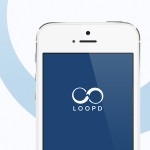 Networking is not something that comes easily to many people. Indeed, to some it’s something that makes them feel positively dirty. It’s perhaps not surprising therefore that over the years, a variety of tools and applications have hit the market to try and make networking easier and more effective.
Networking is not something that comes easily to many people. Indeed, to some it’s something that makes them feel positively dirty. It’s perhaps not surprising therefore that over the years, a variety of tools and applications have hit the market to try and make networking easier and more effective.
Lunch Roulette for instance would aim to match up people within an organization at random for a lunch date, with the aim being that such serendipitous encounters could prove beneficial.
A slightly more structured approach was proposed by researchers in a paper published earlier this year. The researchers asked attendees at a science conference to document their expertise, which of the other attendees they knew, and topic areas they were interested in learning more about. This information was then compiled and used to construct two rounds of speed networking, with an algorithm used to match up delegates that could be of interest to one another.
The networking session was divided into two rounds. The first round matched participants with peers that were relatively far from themselves, both in terms of their place in the social network of other delegates, and in their relative expertise. The second round also paired up people far from each other in network terms, but were much more aligned in terms of their expertise in that they had skills the other person wanted to learn.
So, basically, it was designed to make useful connections between delegates by matching up people that wouldn’t ordinarily know each other, but would hopefully gain from doing so. Sounds simple doesn’t it? When delegates were surveyed after the conference, their responses were very positive, with over 50% of delegates announcing potential new collaborations emerging from the networking sessions.
Of course, that is great at building greater bonds between the delegates at an event, but what about the bond between delegates and sponsors? You often get loaded down with leaflets and freebies, but how useful are those at forging a bond between the two parties?
Loopd believe they have come up with a better approach. They’ve developed a new type of lanyard that tracks what the delegate does and where they go at the conference. The user can then review their movements during the event, and even access content related to their travels.
The system comes in three core components. First is a series of beacons that are placed throughout the conference venue to deliver data to chips contained within each lanyard. The data is largely location based, allowing the system to understand who is where at any moment in time.
The final part of the system is an app that allows users to check where they’ve been, which parts of the venue they’d spent most time at, the people they spoke to, and content from vendors they engaged with.
The app also has a merchant interface as well, so they can see who was interested in their products, plus some nice features such as a traffic flow heat map and even the demographics of the interested delegates.
Suffice to say, the primary application is for conferences and other corporate style events, but the makers believe the system could also be valuable for any event where this kind of location based data would be useful.
What is undoubtedly clear is that networking is entering a much smarter, data driven age, which will hopefully make it a less dirty experience for those who aren’t naturals at it.
Interesting stuff and all, but a bit big brother like?
Haha, what a great idea. I'd love this for the events I run.